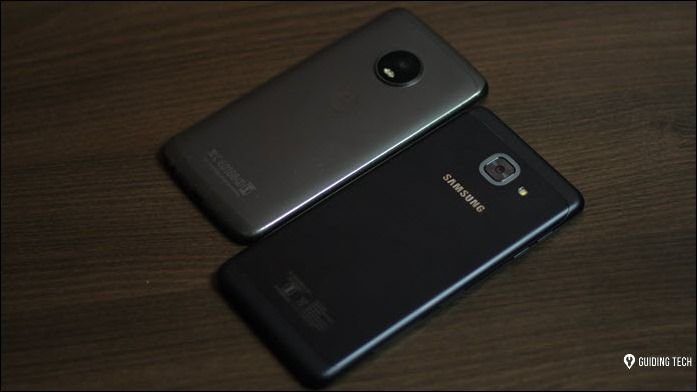If you recollect, a year ago, in May 2017 Qualcomm unveiled its major release in the affordable chipset segment — the Snapdragon 660. This chipset was supposed to be the best processor to bring the flagship-tier performance to the premium Android phones. So, just a year down the line, it begs the question if the Qualcomm Snapdragon 710 is any different from the Snapdragon 660. And if it’s not just an incremental update, then what are the major differences and improvements of Snapdragon 710 over 660? Let’s see
Specifications that Matter
Performance & Efficiency: The Key Decider
The first major differences arise in the form of the CPU and the design process. While the Snapdragon 660 was manufactured using the 14nm LPP FinFET process from Samsung, the Snapdragon 710 borrows the design process from Qualcomm’s flagship processor — the Snapdragon 845. It adopts Samsung’s leading edge 10nm manufacturing process thus making it more power efficient (better battery life) and gives a major boost to the heat control and the overall performance. If you recall, the 660 was the first processor in the 600-series to come with Qualcomm’s custom Kryo cores. The addition of the 64-bit ARM Kryo 260 cores not only improved the task-sharing capacities but also reduced the latency. If we dive deep into the structure, the Kryo 260 cores consist of four Cortex-A73 ‘performance’ cores (clocked at 2.2 GHz) and four Cortex-A53 ‘efficiency’ cores (clocked at 1.7 GHz). Quite naturally, the Snapdragon 710 has upgraded its CPU. You won’t see the Kryo 260 cores that are present in the Snapdragon 660 and 636. Instead, it houses a cluster of eight Kryo 360 cores. While two of the BIG cores are clocked at a higher frequency of 2.2 GHz, the rest of the little cores are clocked at 1.7 GHz. Unlike the Cortex-A73 seen in Kryo 260, the Kryo 360 is based on ARM’s Cortex-A75 CPUs. If we were to talk numbers, the Snapdragon 710 is around 20% faster compared to the Snapdragon 660. Moving on to the GPU section, the Snapdragon 710 boasts of the new Adreno 616 GPU. In fact, it’s the first chipset to sport the new 600 series Adreno.
Connectivity: How Well Will you Stay Connected
The Snapdragon 710 implements a X15 modem. This modem is capable of download speeds up to 800 Mbps and upload speeds of up to 300 Mbps. On the other hand, the Snapdragon 660 is equipped with the older X12 modem which delivers download speeds up to 600 Mbps and 150 Mbps. Interestingly, the 710 also borrows a few more components from the Snapdragon 845 such as 4X4 MIMO and LAA (License-Assisted Access). The bottom line is, with the 710, we’ll see better connection speeds, almost similar to the 845.
Camera: The Shutter Game
When it comes to the camera, the Snapdragon 710 has a major bump in the camera ISP compared to its 600-series counterparts and that’s where it shines. Instead of the usual Spectra 160 ISP, the 710 chipset comes with the new Spectra 250 ISP. The Spectra 250 ISP enhances low-light images and can support single 32-megapixel sensors or dual 20-megapixel sensors. Apart from that, the Snapdragon 710 is capable of HD Video capture while consuming 40% less power. Yay, more battery life! It’s worth mentioning that the Spectra 160 ISP can support a camera up to 24-megapixels. Needless to say, the Spectra 250 ISP brings the flagship-like image quality such as the detection of fine edges in portrait photography. In a nutshell, the 710 strives to achieve the image quality that we see on flagships like the Galaxy S9 or the OnePlus 6. Of course, a lot will depend on how the OEMs tap the image-processing power of this chipset.
AI Engine
Artificial Intelligence is the buzzword of 2018. Up until now, Qualcomm employed the in-house Neural Processing Engine (NPE). Though there still isn’t a dedicated neural processing unit in the Snapdragon 710, it employs a multicore AI engine along with the NPE which delivers up to 2X better performance in AI apps, when compared to the previous generations. The absence of a dedicated neural engine is made by the combination of the Hexagon 685 DSP, Adreno GPU, and the Kryo CPU. Thankfully, the AI doesn’t do wonders just in the photography game, it also does its bit when it comes to the security aspects and the gaming scene.
Is It Just Another Chipset
It can be safely said that the Snapdragon 710 is more than just an upgrade to the Snapdragon 660. In fact, seeing its boost in overall performance and how it has borrowed all the right elements from the flagship processors, it can be tagged as an ‘affordable flagship’ chipset. The best thing about this mobile platform is that it has done so without sacrificing the crucial features while at the same time keeping the cost low. It remains to be seen, though, how this processor would take on real-world scenarios. The Snapdragon 710 was announced in May 2018 and is expected to be seen in phones by this year-end. HMD Global’s new follow-up to the Nokia 7 Plus will reportedly have this chipset, along with Google’s mid-range Pixel 3 phone. The above article may contain affiliate links which help support Guiding Tech. However, it does not affect our editorial integrity. The content remains unbiased and authentic.



















